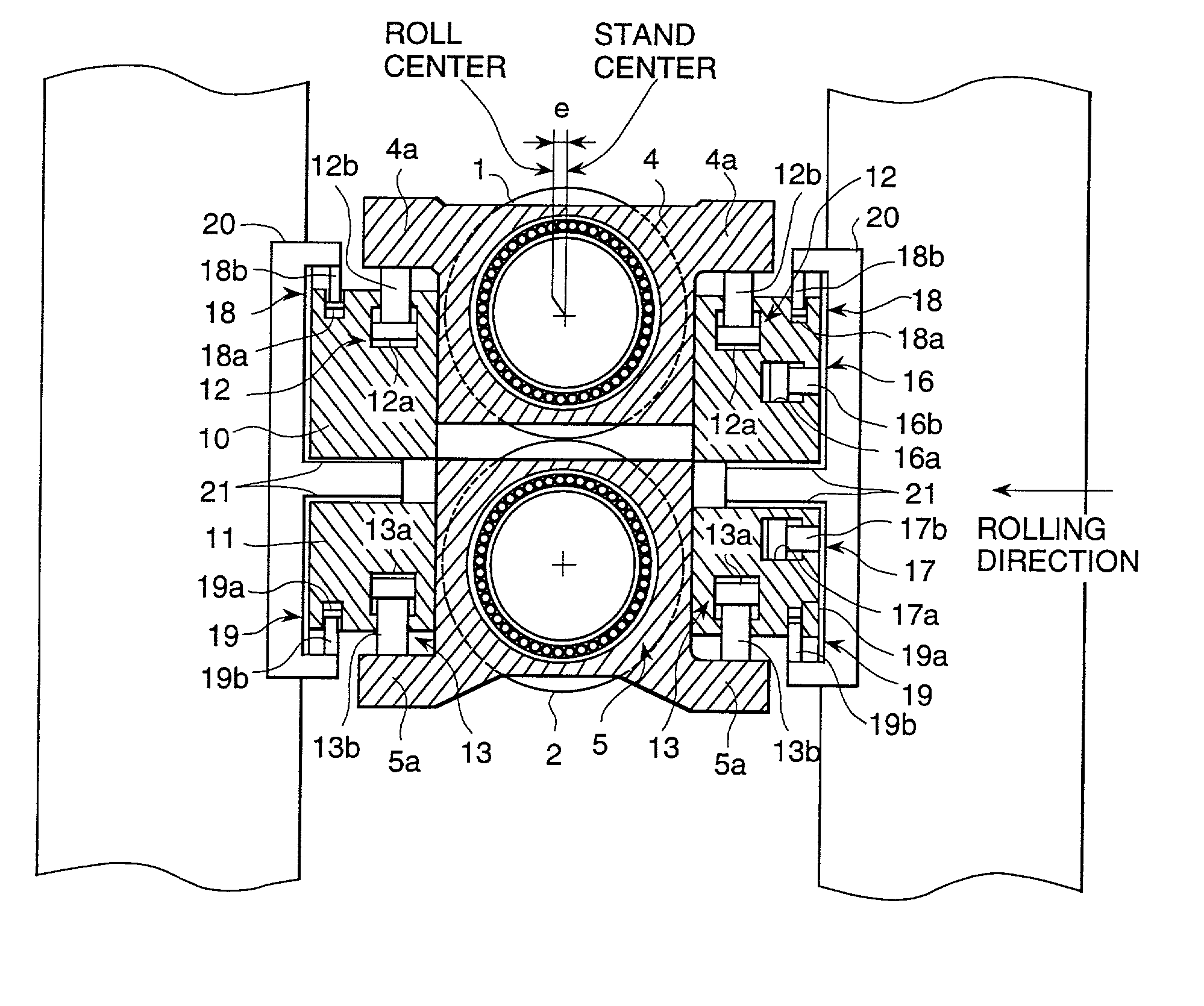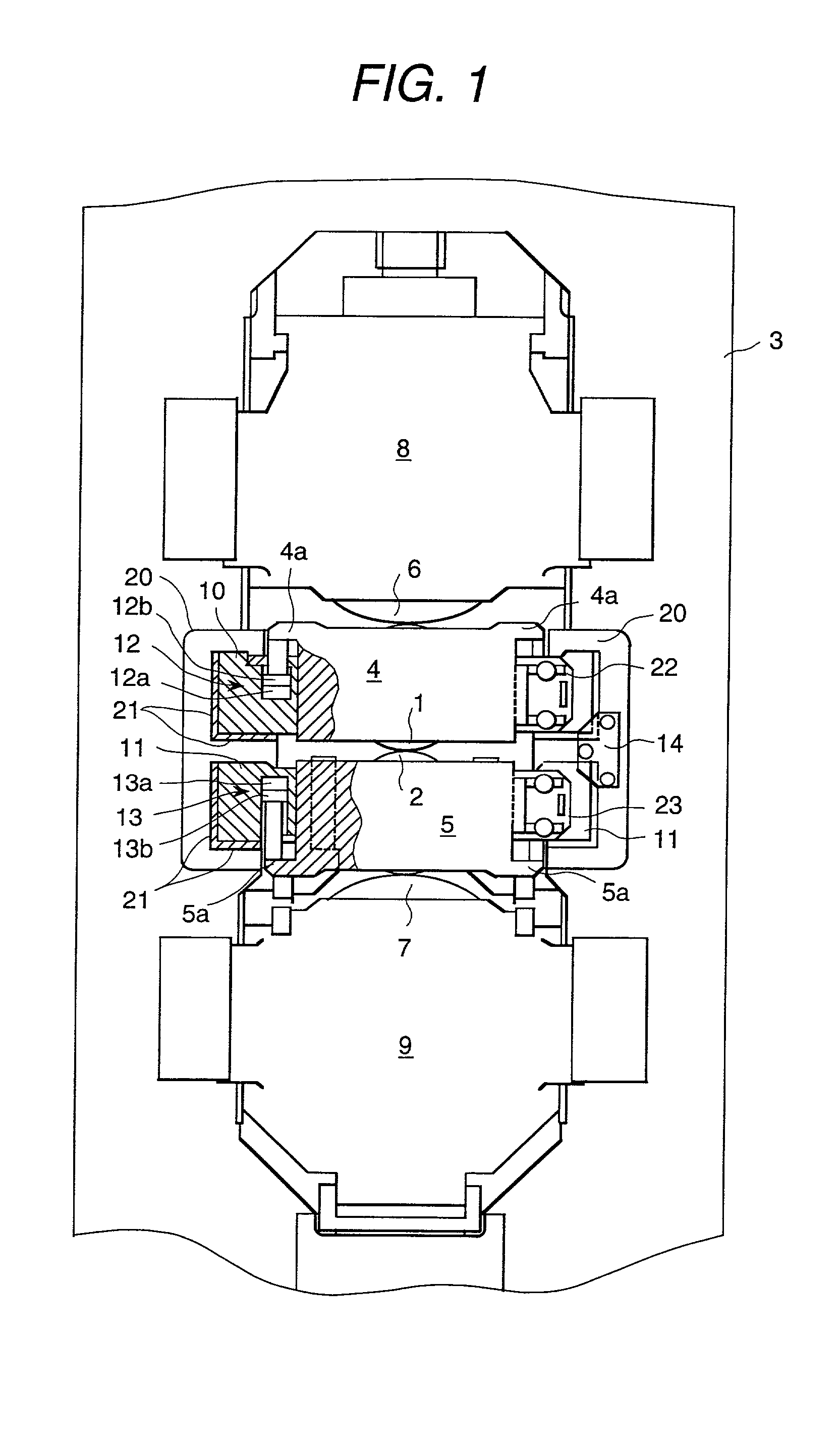Rolling mill and rolling method
- Summary
- Abstract
- Description
- Claims
- Application Information
AI Technical Summary
Benefits of technology
Problems solved by technology
Method used
Image
Examples
Embodiment Construction
[0023] In the following, a preferred embodiment of the present invention is described referring to the figures.
[0024] In FIG. 1 and FIG. 2, the top and bottom work rolls 1 and 2 that roll the material to be rolled are supported at both ends by the work roll chocks 4 and 5 that are held inside the window part of the mill stand (rolling mill housing) 3, and the back-up rolls 6 and 7 in contact with the work rolls 1 and 2 are similarly supported at both ends by the back-up roll chocks 8 and 9 that are held within the mill stand 3. The back-up rolls 6 and 7 and the back-up roll chocks 8 and 9 can move in the up / down direction as in the conventional manner, and are fixed in the direction of the roll axis. The work roll chocks 4 and 5 are formed with a width narrower than the width of the window part of the mill stand 3, and are held and supported by the mill stand 3 via the movable frames 10 and 11 placed almost at the middle of the mill stand in the up / down direction.
[0025] The movable ...
PUM
| Property | Measurement | Unit |
|---|---|---|
| Force | aaaaa | aaaaa |
| Flow rate | aaaaa | aaaaa |
| Shape | aaaaa | aaaaa |
Abstract
Description
Claims
Application Information
 Login to View More
Login to View More - R&D
- Intellectual Property
- Life Sciences
- Materials
- Tech Scout
- Unparalleled Data Quality
- Higher Quality Content
- 60% Fewer Hallucinations
Browse by: Latest US Patents, China's latest patents, Technical Efficacy Thesaurus, Application Domain, Technology Topic, Popular Technical Reports.
© 2025 PatSnap. All rights reserved.Legal|Privacy policy|Modern Slavery Act Transparency Statement|Sitemap|About US| Contact US: help@patsnap.com



